RTC to consider $750M light-rail line near Las Vegas airport, UNLV
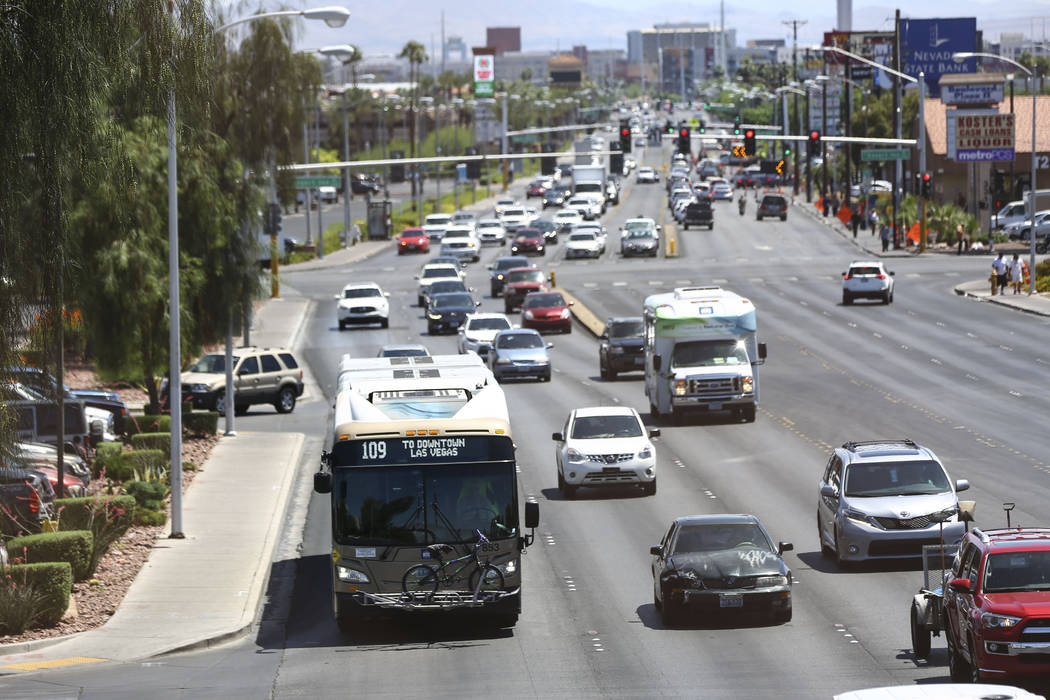
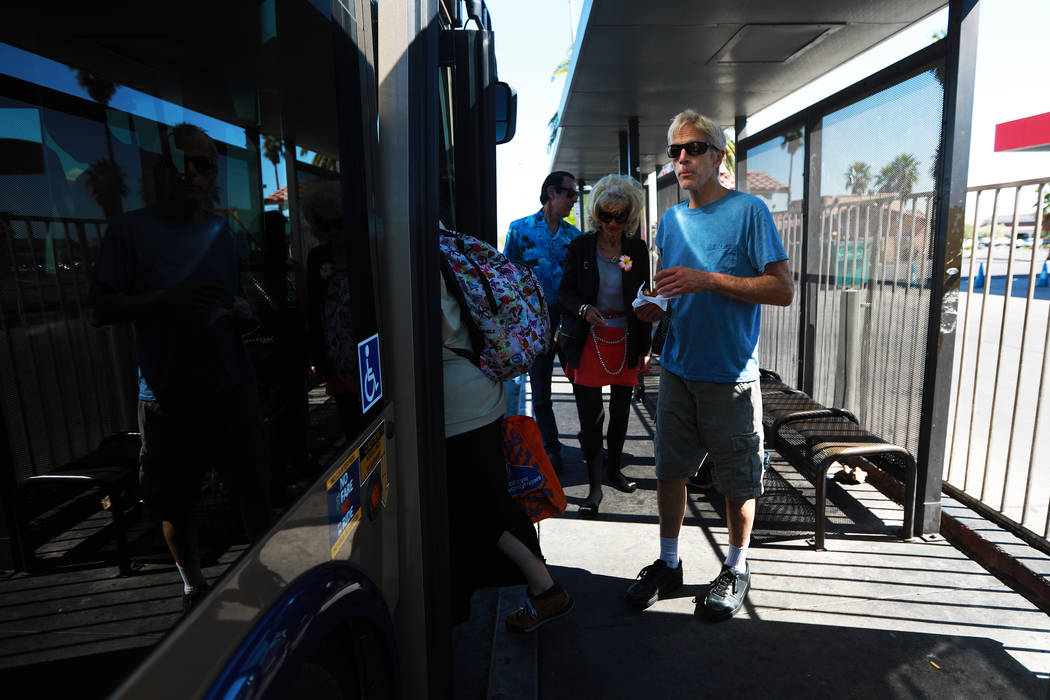
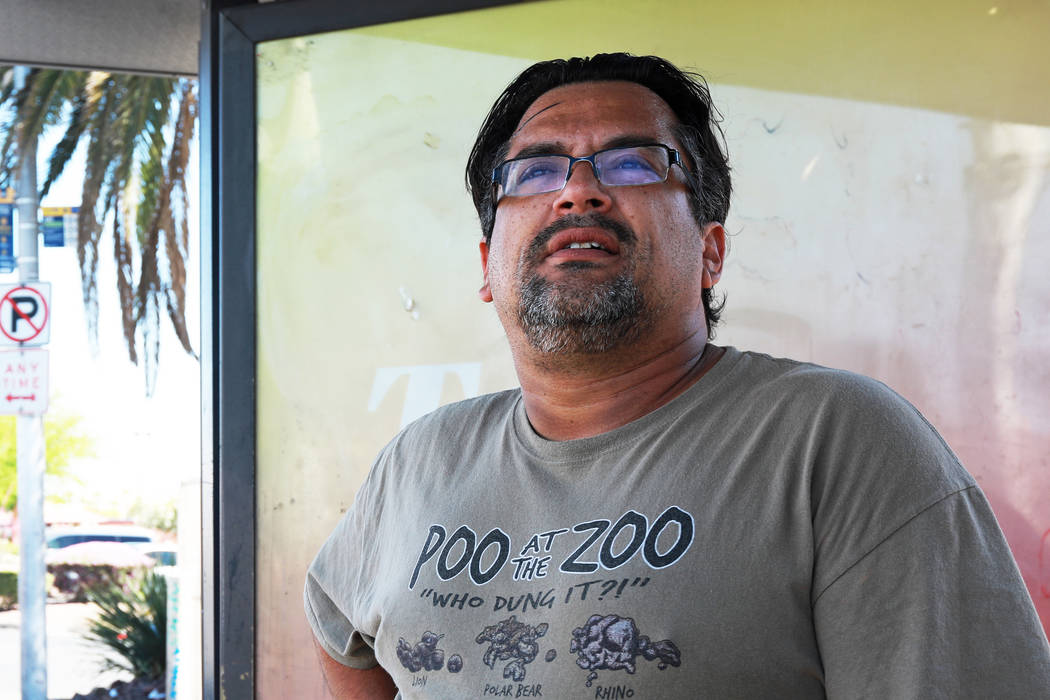
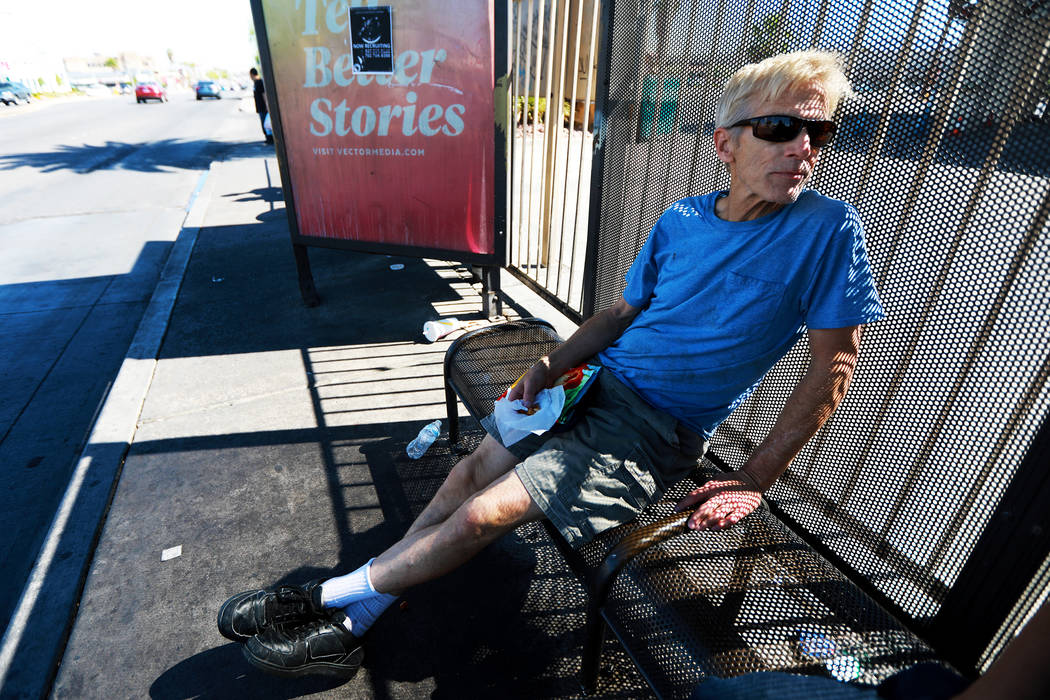
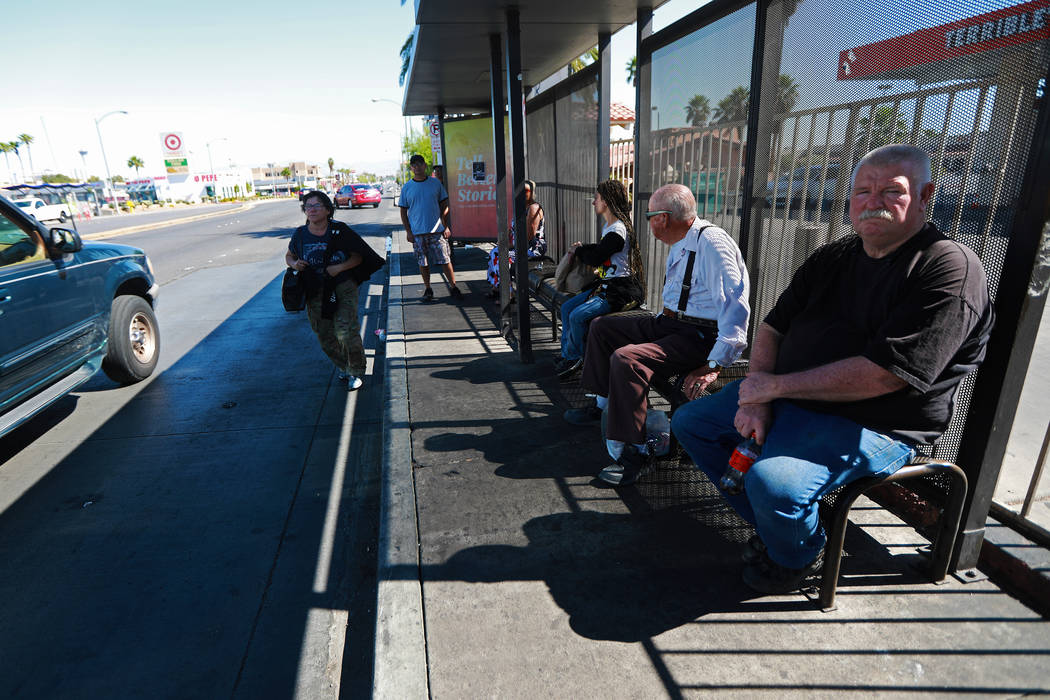
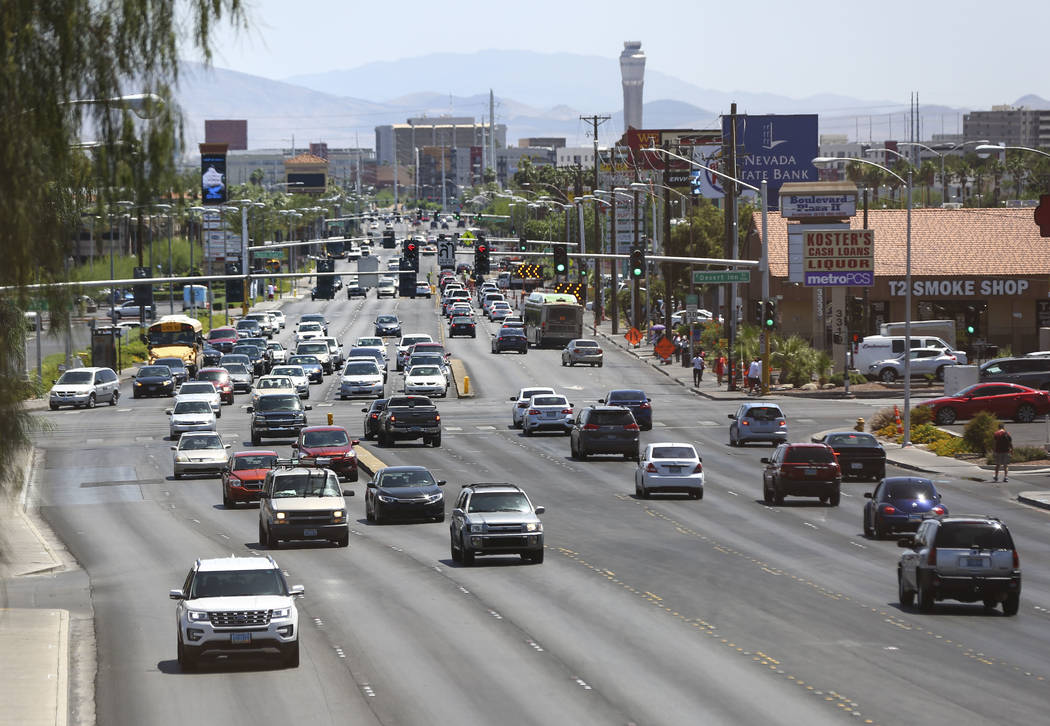
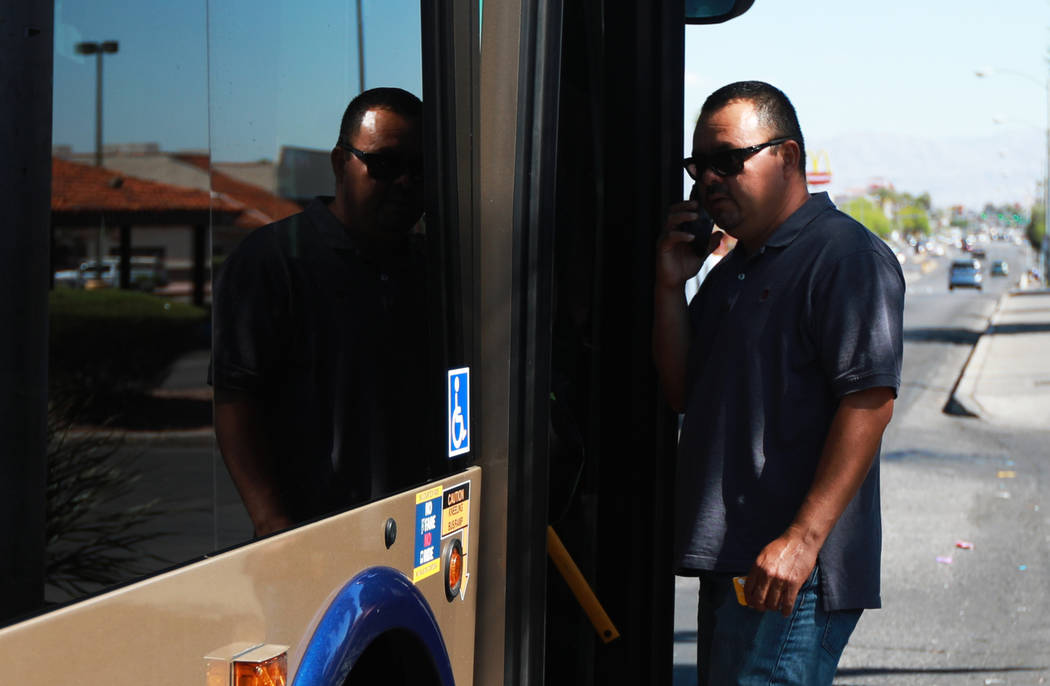
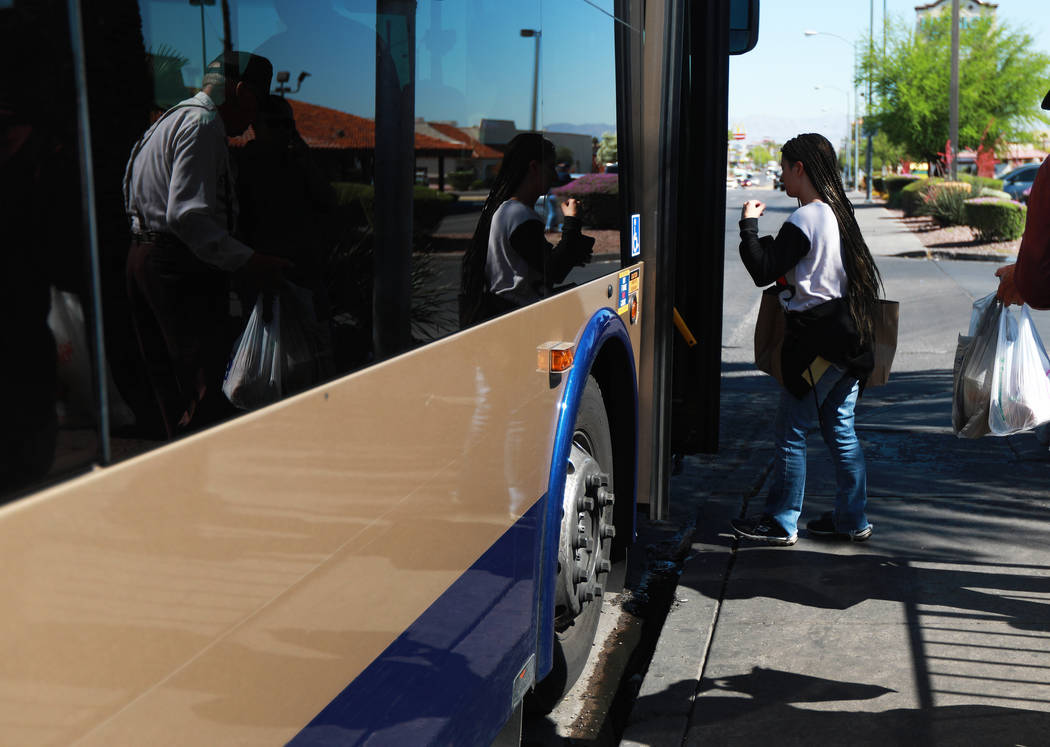
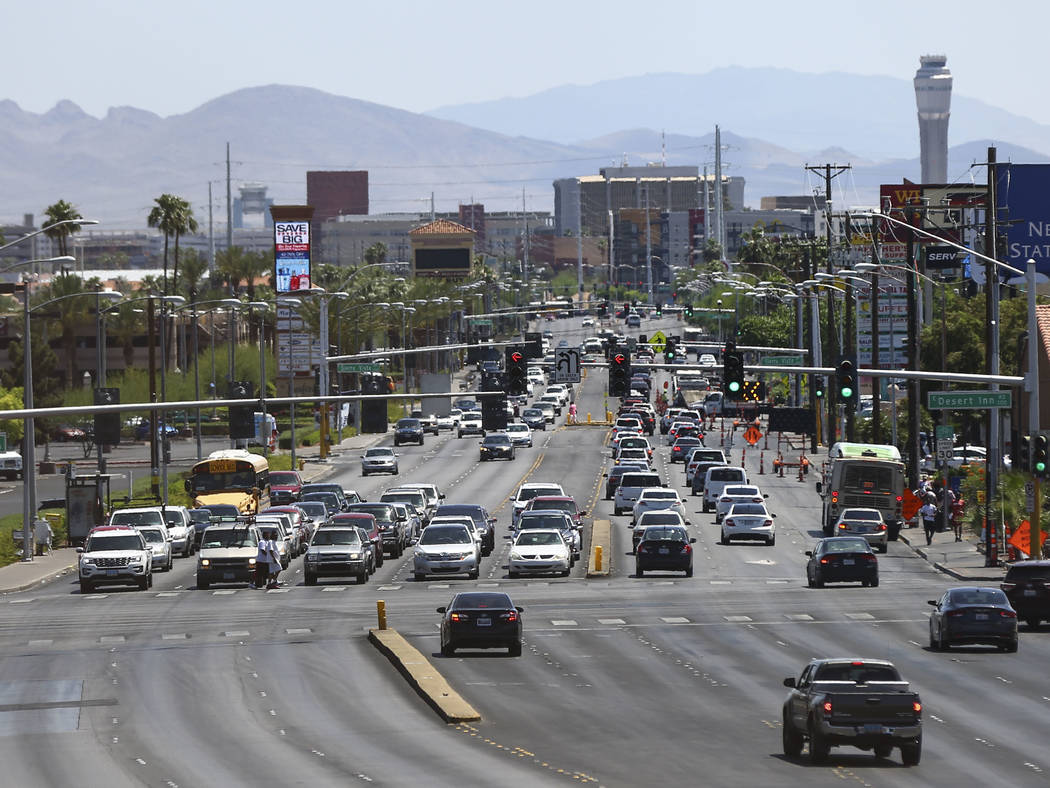
First of a three-part series.
Good luck boarding the bus on Maryland Parkway.
Seats get snatched up pretty quickly during the weekday commutes along Route 109, running between McCarran International Airport and the Bonneville Transit Center in downtown Las Vegas.
A couple of miles into the ride, the standing group of riders resembles a pack of sardines squeezed into a metal container hurtling down one of the region’s busiest corridors.
“The bus usually gets so crowded, I can hardly move,” said Dave Mueller, who has boarded Route 109 every day over the past three years to get to his job as an adult caretaker.
“Even if there’s another bus right behind, they’re still jammed,” Mueller, 43, said. “If there was a better way, I’d take it.”
A solution could be identified in September, when the Regional Transportation Commission of Southern Nevada will consider whether to build a $750 million light-rail line that would primarily run along Maryland Parkway starting by 2025.
This month, an RTC advisory committee made up of 36 local business, tourism and union leaders recommended moving forward with the light-rail plan.
Less costly options under consideration include a set of bus rapid transit lanes that could cost up to $335 million and starting by 2024, or a $29 million improvement project by 2020 for the east valley roadway, where more than 9,000 bus riders and 35,000 vehicles travel daily.
Opening day projections for a light-rail line with 24 proposed stops stand at 16,100 riders, while forecasts for a bus rapid transit line stand at 13,300 passengers, RTC officials said.
“The success of Maryland Parkway will literally set the tone for anything we do over the next generation here in Southern Nevada,” Clark County Commissioner Larry Brown, who serves as the RTC’s chairman, said during the transit agency’s board meeting held in April.
Choosing Maryland
The RTC has spent several years devising a high-capacity transit plan for the Las Vegas Valley, a rapidly growing region that continues to heavily rely on vehicles.
A trip on the proposed light-rail line would last 32 minutes end-to-end on an 8.7-mile route that would start at the airport and travel past UNLV, Sunrise Hospital and Boulevard Mall along Maryland Parkway, cutting west on Carson Avenue through downtown Las Vegas.
From there, the route would head south on Casino Center Boulevard, near the Golden Nugget hotel-casino, to the Bonneville Transit Center, where it would veer west to go past the county administrative center, Las Vegas North Premium Outlets and on to a terminus at the future site of UNLV’s School of Medicine.
Commuters currently using the Route 109 bus expressed mixed reactions to the RTC’s plan for a light-rail line at a cost of more than $86.2 million per mile.
“I don’t think the city is big enough, there aren’t enough people living here,” Kiko Tauiliili, 39, said while waiting for a bus recently at Maryland and Flamingo Road. “I think that money should be spent on other parts of the city and improve the bus service we have right now.”
Other frequent bus riders, like part-time security officer Michael Perkins, said he supported a light-rail line on Maryland because it’s time for Las Vegas to “start looking like a big city.”
“It’s not a little desert city in a big, flat valley anymore,” Perkins said. “It’s a big city, and the buses are full all the time.”
Maryland Parkway came into focus as an ideal corridor in 2014 because of the heavy use along Route 109, which serves the most bus riders per mile outside of the Strip while also intersecting with 25 other bus lines.

Developers also view Maryland as a corridor that’s ripe for economic growth, with high-density residential and commercial projects that could potentially serve the university, mall and hospital.
“If light rail is successful along Maryland, the transit mode could potentially evolve into a network serving the entire region,” said David Swallow, the RTC’s senior director of engineering and technology.
“Maryland Parkway really is the connector of the valley,” Swallow said. “It stitches together our overall network.”
Landing at the airport
Soon, the Federal Transit Administration is expected to release environmental assessments that would allow the RTC to decide whether a light-rail line would fit in with Las Vegas.
From there, the RTC would gauge interest during a 30-day public comment period leading up to a decision by the transit agency’s board of directors in September.
If a light-rail line is approved, the RTC would need to start tracking down funding sources to pay for the project — likely through a mix of federal funds, fares and sales taxes.
Engineering and design for the project also would move ahead to shore up details for the route.
A challenge facing RTC officials is where to build a high-capacity transit stop for airline passengers looking for a convenient ride between McCarran International Airport and downtown Las Vegas.
One thing is guaranteed: Don’t expect the light-rail line to drop off riders directly outside the airport terminals.
“Future off-airport options will need to connect to a multimodal transportation center from which travelers could then connect on to or from the terminals,” airport spokesman Chris Jones said.
“There isn’t adequate space to accommodate multiple uses any other way,” Jones said. “The multimodal transportation center would be designed to accommodate more than one option.”
Potential sites for that multimodal transportation center will likely be included in an evaluation by Las Vegas-based engineering consultant GCW, which was recently hired to examine existing roadways and traffic conditions at the nation’s eighth-busiest airport, Jones said.
One spot long eyed by local transit officials is a chunk of airport-owned land known as the “tear drop,” given its odd shape nestled between Paradise Road, Swenson Street, Janis Lane and Kitty Hawk Way. Though the site is an option, GCW’s study could identify additional locations for a transit stop.
Jason Blackburn, an east valley resident who rides the Route 109 bus directly to his job at the airport’s car-rental complex, said he was skeptical of the plan.
A multimodal center, he said, would lengthen the commute Blackburn has taken since 2009.
“After taking the light rail to the end of the line at the airport, I would have to take another shuttle to the car rental center,” Blackburn said. “That would take more time.”
Evolving technology
By the end of this year, the RTC will release its so-called “On Board” study, which will examine how evolving technologies might help to improve access and capacity on some of Southern Nevada’s busiest corridors over the next 20 years.
For example, the proposed Maryland light-rail line might not require the use of overhead electrical lines — known as catenary wires — traditionally used by older models. Instead, the Las Vegas line could potentially operate with battery-operated vehicles similar to sections of Detroit’s light rail, along with a route under consideration in Seattle.
Although catenary wires will be listed as a “potential visual impact” in the RTC’s pending environmental assessment, officials said they won’t likely appear on Maryland Parkway. While battery-operated vehicles cost more to purchase, other transit agencies have reported reduced costs for infrastructure installation.
“Realistically, technology is developing in such a way that if we were to go forward with a rail option, then we would not have the overhead contact system,” said Swallow, the RTC’s engineering chief.
Additionally, the light-rail trains or bus rapid transit would share curbside lanes with vehicles traveling on Maryland, rather than running down a designated centerline strip as seen in most other cities.
The move, Swallow said, is aimed at preserving the current traffic capacity and allowing vehicles to turn left into existing commercial centers, all while introducing upgrades to the regional transit system.
The aesthetics don’t matter to Ronald Samy, who has frequently boarded the Route 109 bus since moving from India to the east valley a few months ago.
“There’s something about trains that people really like, so I would probably ride it more often than the bus,” Samy, 36, said at the Maryland-Flamingo stop. “It would also be better for people traveling to work because it would be faster and hopefully give us a little more room.”
Coming Monday: How to pay for a light-rail line.
Contact Art Marroquin at amarroquin@reviewjournal.com or 702-383-0336. Find @AMarroquin_LV on Twitter.













